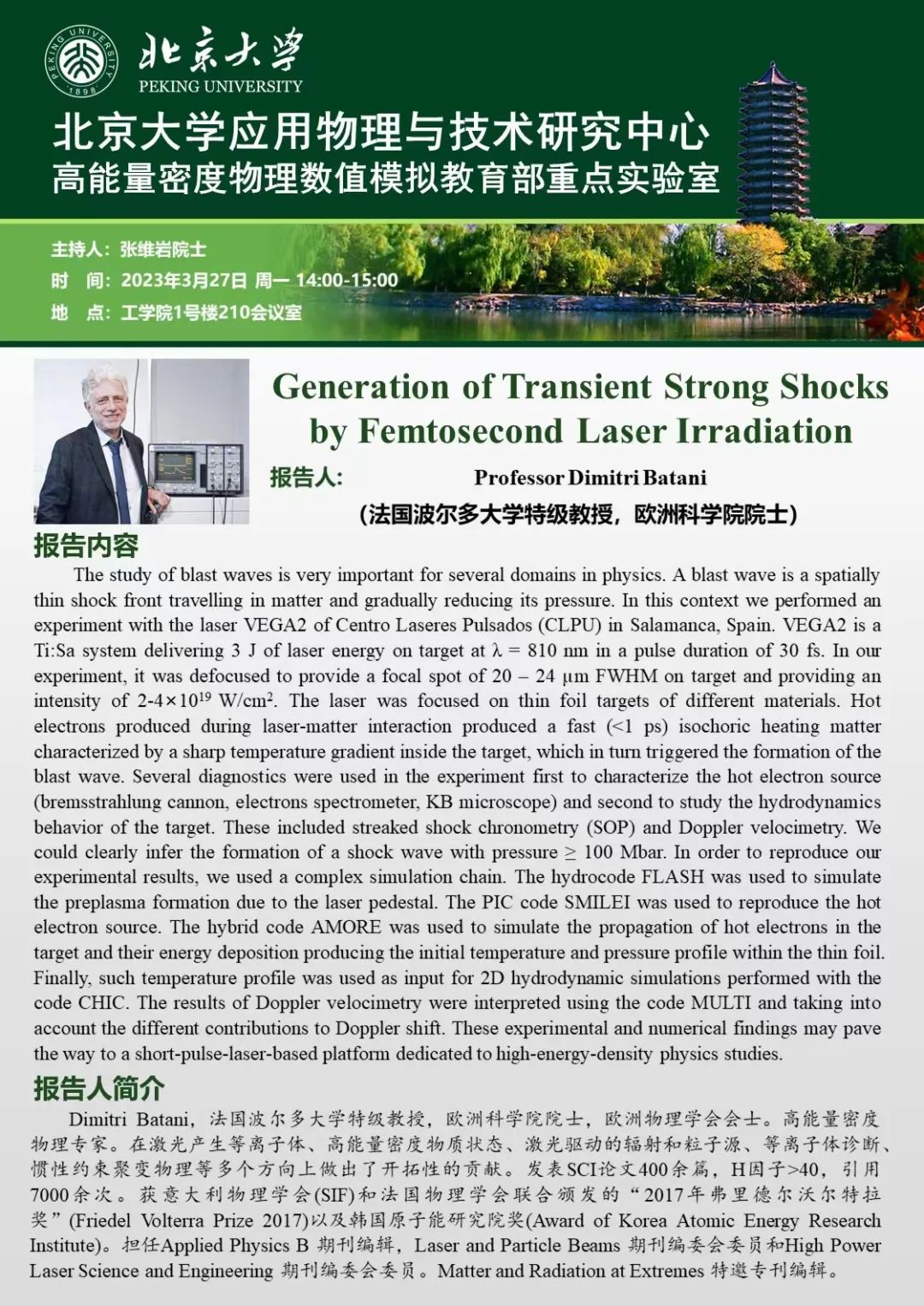Speaker: Professor Dimitri Batani, University of Bordeaux, Academician of the European Academy of Sciences
Time: 14:00-15:00 pm, March 27, 2023, GMT+8
Venue: College of Engineering No.1 Building, 210 Room
Abstract:
The study of blast waves is very important for several domains in physics. A blast wave is a spatially thin shock front travelling in matter and gradually reducing its pressure. In this context we performed an experiment with the laser VEGA2 of Centro Laseres Pulsados (CLPU) in Salamanca, Spain. VEGA2 is a Ti:Sa system delivering 3 J of laser energy on target at λ = 810 nm in a pulse duration of 30 fs. In our experiment, it was defocused to provide a focal spot of 20 – 24 µm FWHM on target and providing an intensity of 2-4×10 19 W/cm2 . The laser was focused on thin foil targets of different materials. Hot electrons produced during laser-matter interaction produced a fast (<1 ps) isochoric heating matter characterized by a sharp temperature gradient inside the target, which in turn triggered the formation of the blast wave. Several diagnostics were used in the experiment first to characterize the hot electron source (bremsstrahlung cannon, electrons spectrometer, KB microscope) and second to study the hydrodynamics behavior of the target. These included streaked shock chronometry (SOP) and Doppler velocimetry. We could clearly infer the formation of a shock wave with pressure ≥ 100 Mbar. In order to reproduce our experimental results, we used a complex simulation chain. The hydrocode FLASH was used to simulate the preplasma formation due to the laser pedestal. The PIC code SMILEI was used to reproduce the hot electron source. The hybrid code AMORE was used to simulate the propagation of hot electrons in the target and their energy deposition producing the initial temperature and pressure profile within the thin foil. Finally, such temperature profile was used as input for 2D hydrodynamic simulations performed with the code CHIC. The results of Doppler velocimetry were interpreted using the code MULTI and taking into account the different contributions to Doppler shift. These experimental and numerical findings may pave the way to a short-pulse-laser-based platform dedicated to high-energy-density physics studie.
Source: College of Engineering
